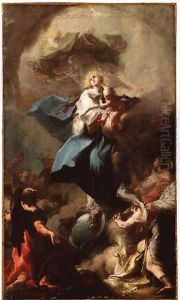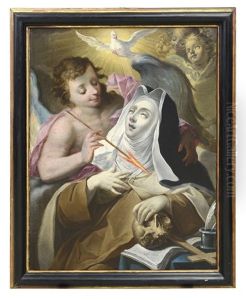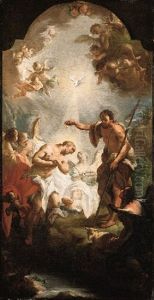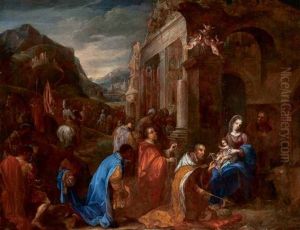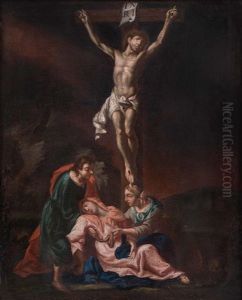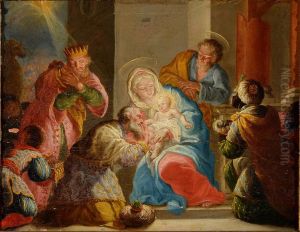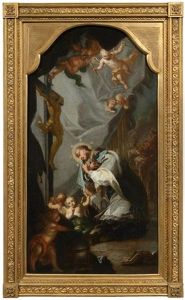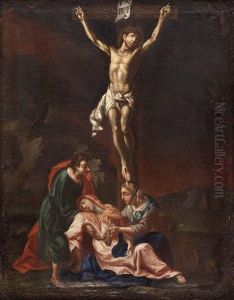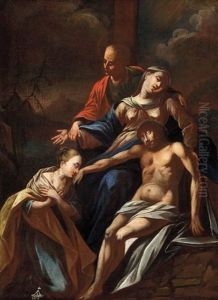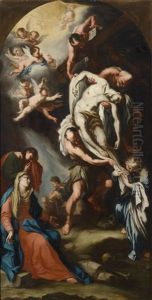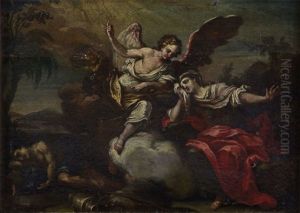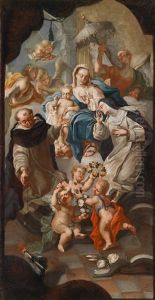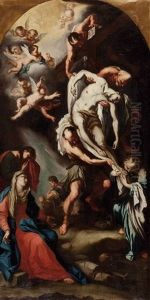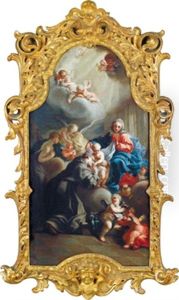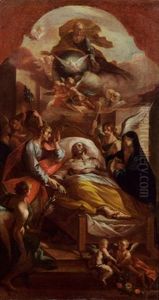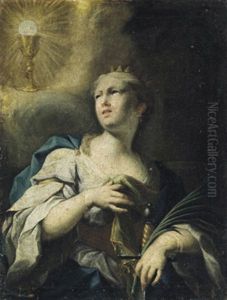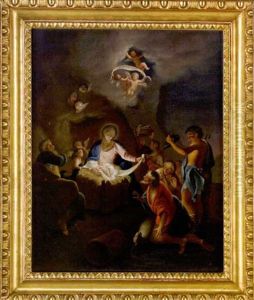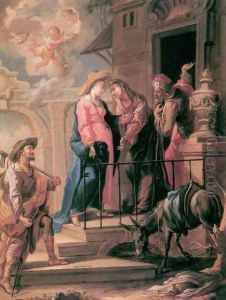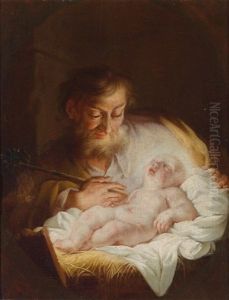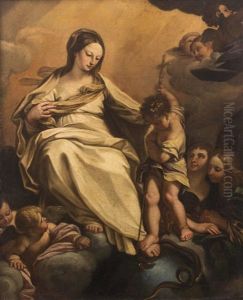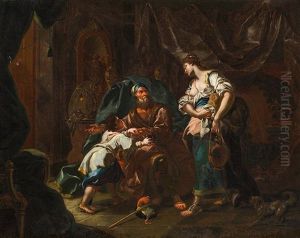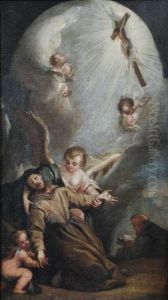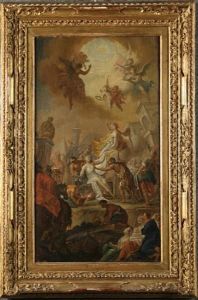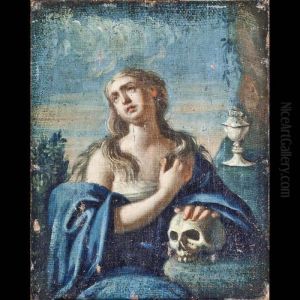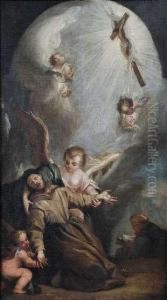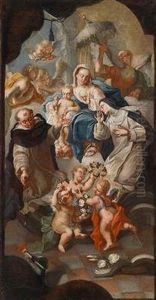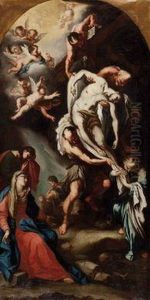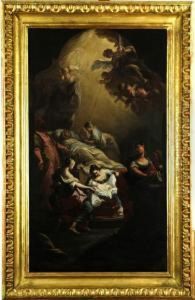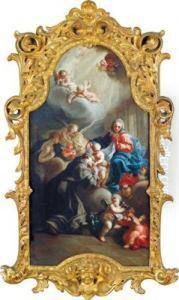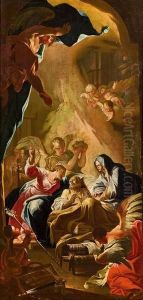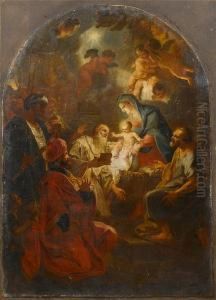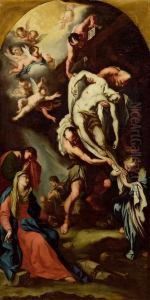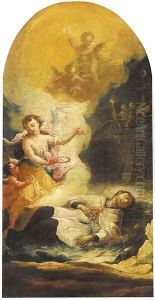Michelangelo Unterberger Paintings
Michelangelo Unterberger was an Austrian painter, primarily known for his significant contributions to late Baroque and early Rococo art. Born in 1695 in Cavalese, in what is now Italy but was then part of the County of Tyrol, Unterberger's early life set the stage for a career that would weave together the artistic traditions of Italy and Austria, reflecting the rich cultural exchange of the period.
He initially trained with Giuseppe Alberti in Cavalese, which laid the foundation for his artistic development. His talent and ambition led him to further his studies in Rome, the epicenter of Baroque art, where he was deeply influenced by the works of the great masters of the Italian Renaissance and Baroque periods. This influence is evident in his adept use of dramatic light, shadow, and his meticulous attention to detail, which became hallmarks of his style.
Unterberger's career flourished when he moved to Vienna in the early 18th century, where he became a central figure in the city's artistic scene. He was appointed the director of the Imperial Academy of Fine Arts in Vienna, a position that underscored his influence in shaping the artistic direction of the region. In this role, he was not only a prolific artist but also a respected teacher, mentoring the next generation of European artists.
His works, which include religious compositions, portraits, and historical scenes, are celebrated for their emotional depth and technical precision. They can be found in churches, public buildings, and private collections across Europe, particularly in Austria and Italy. Unterberger's legacy is not only in the beauty of his art but also in his contribution to the development of the Rococo style in Central Europe, bridging the gap between the grandeur of Baroque and the lightness and grace of Rococo.
Michelangelo Unterberger passed away in 1758 in Vienna, leaving behind a body of work that continues to be studied and admired for its artistic merit and historical significance.
